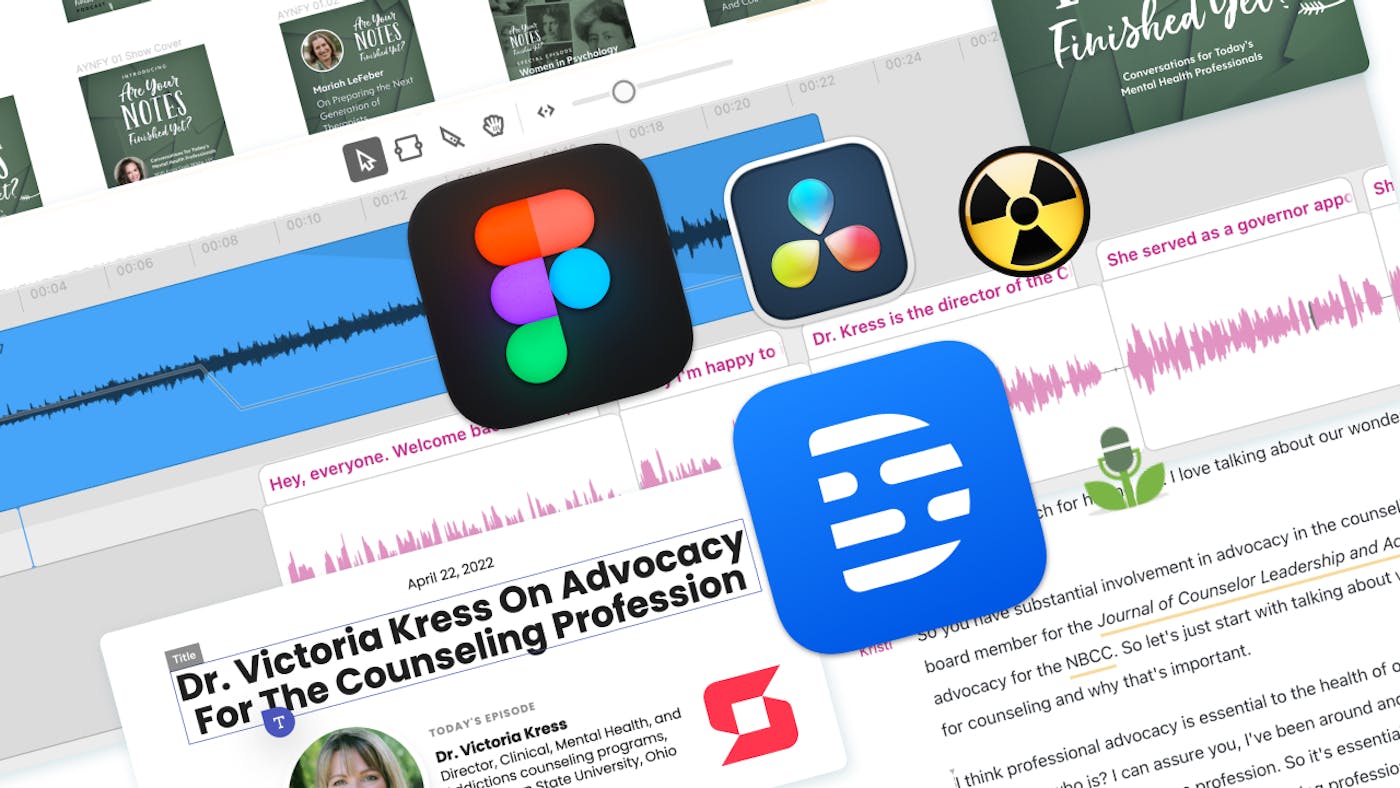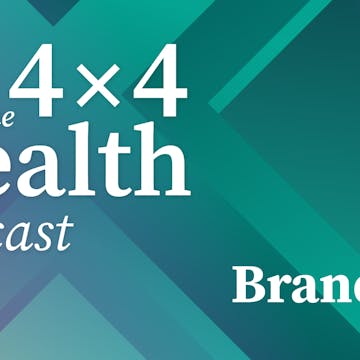The Show: "Are Your Notes Finished Yet?" Podcast
My wife Kristi is working on her PhD in Counseling Education. Over the course of many of our daily walks, we came up with the idea for a podcast for counselors and educators as a way expand her thesis project. She has been interviewing experts from all across her field: practitioners, marketing experts, authors and teachers, policy experts, those working in law or criminal justice, and more. The response at her school and in her counseling community has been very positive.
This is my third podcast that I’ve produced from start to finish, and while the fundamentals have remained fairly constant, it is just so much easier to produce now. Today, individuals and small teams can produce podcasts that are as good as any out there.
I’ve taken that earlier training and experience and used that to update my toolset with a research effort. Here are my favorite software tools and services for producing stellar podcasts in 2022.
The interview: Zoom (and why I won't use it again)
Remote interviewing has come a long way since I first did it back in 2010 or so with Skype. We started off using Zoom because of inertia, and also because I was trying to keep the experience of interviewing people remotely as simple as possible for the participants. It was “good enough” to start, and I knew I could isolate the tracks by enforcing use of headphones in the studio.
There’s just a lot of problems introduced on the interviewee’s side: echo cancellation, audio bleed, noise, and digital compression, all needing cleanup or even being unusable. Zoom isn’t bad, but I wish I had given Riverside a try earlier. It has a few remaining issues but overall it’s a big improvement, being web-based, recording maximum quality files at the source and uploading after. There’s also a lot of nice “studio management” features that make for a nice guest experience. I have used Zencastr for the Datica podcasts and that worked mostly pretty well (it was a few years back). Riverside has a lot of buzz and it looks very promising (perhaps for season two!). Price: $15/mo for full quality
Don’t miss Brian Miller’s awesome YouTube channel for AV wisdom. TED speakers go to him for tips.
Recording and editing: Descript
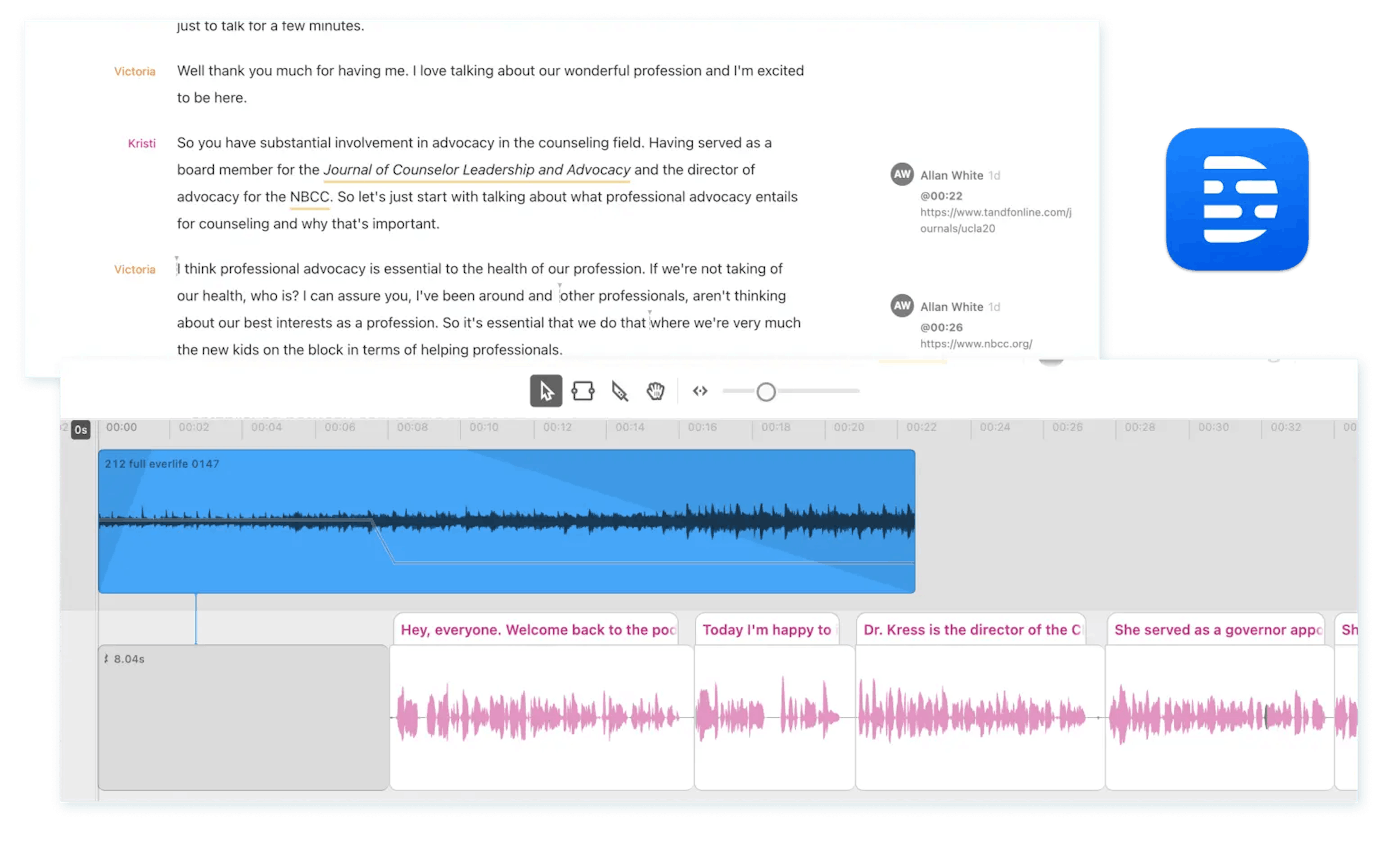
It’s rare to see a disruptive new concept appear in the media space. Descript an audio (and video) editing tool that leverages sophisticated transcription and cloud-based processing to make working with audio as easy as working with a text document. This creates advantages when editing, as well as exporting for delivery in a variety of formats.
When creating a podcast, you’ll need to export things like:
- The master audio file, ideally with embedded metadata
- Videos from the recording
- The transcript, which goes in the episode landing page as markdown, and in the syndication platform as an
.srtcaption. - Exporting quotes or snippets as a video animation (“audiogram”) for social media sharing or other previews.
For example, when I was doing audio & video professionally, there were so many audio cleanup steps & effect filters needed to produce professional-grade audio. Descript saves an enormous amount of work to make sometimes bad streaming vocal audio sound decent with just a few clicks. It’s also updated seemingly several times a week with improvements and bug fixes (which is good, because I’ve run into several). On balance, a big improvement over using traditional audio editing tools.
Price: starting at $25/mo
Descript ad. I love the brand and how they tell the story and the problems it solves for regular people.
Music: PremiumBeat
We decided early on that the podcast deserved to have a musical identity. This aspect is easily more important than the visual identity, as listeners are going to hear that hook every time they play an episode.
I’ve used PremiumBeats in the past and find the browsing experience and the product quality is first-rate. With some attributes we identified together in conversations (usually our daily walks), I was able to find a list of tracks that made good candidates for the tone and style of the podcast; you can listen to the playlist here.
Price: $49/track, including all lengths and stems in high-quality formats
While there’s lots of great free tracks out there, I find the quality and flexibility lacking. PremiumBeat has “stems” which are basically the individual tracks that separate out the instruments. This adds infinite flexibility in your edits.
For example, in the show introduction episode, I was able to create an entire audio soundscape and mood that isn’t obvious in the flattened track — it let me build up a bit of tension before letting the full mix come in. Doing that without the stems would be impossible or sub-optimal.
Brand Design: Figma
A podcast isn’t just audio: it’s a full-on media brand that involves imagery, a website, video, and many, many little graphic bits for those properties, channels, and services. Figma found its place in my heart years ago, and it’s taken over the digital design world. There’s a lot of great fonts out there (even Google Fonts isn’t bad), but I like Design Cuts for their package deals on fonts. I could look at fake font posters all day.
I moved fast & generated lots of variations (there’s no tougher client than your wife!). I plan on writing more about this process as a case study, but you can see a sneak peek at the design evolution:

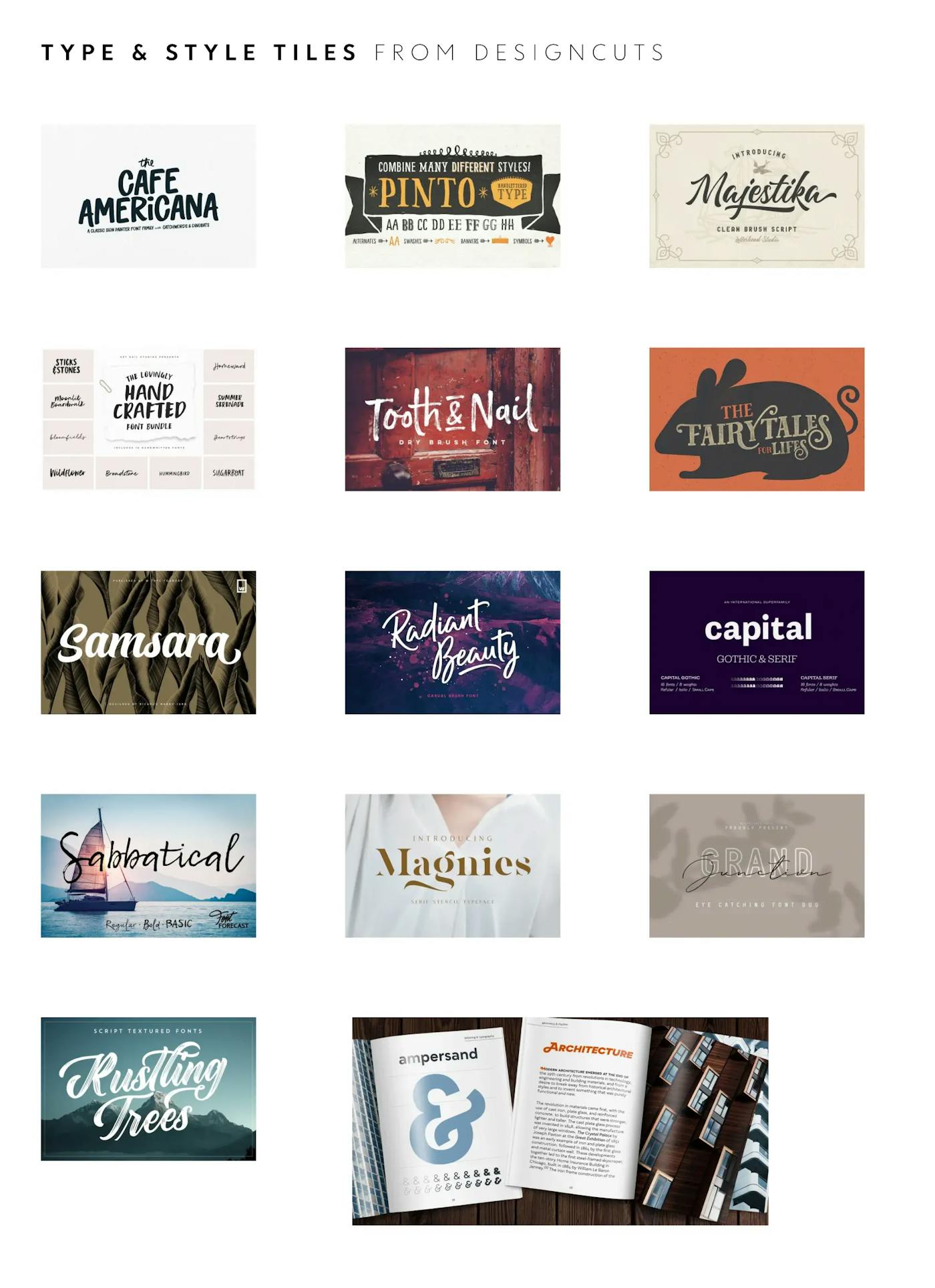
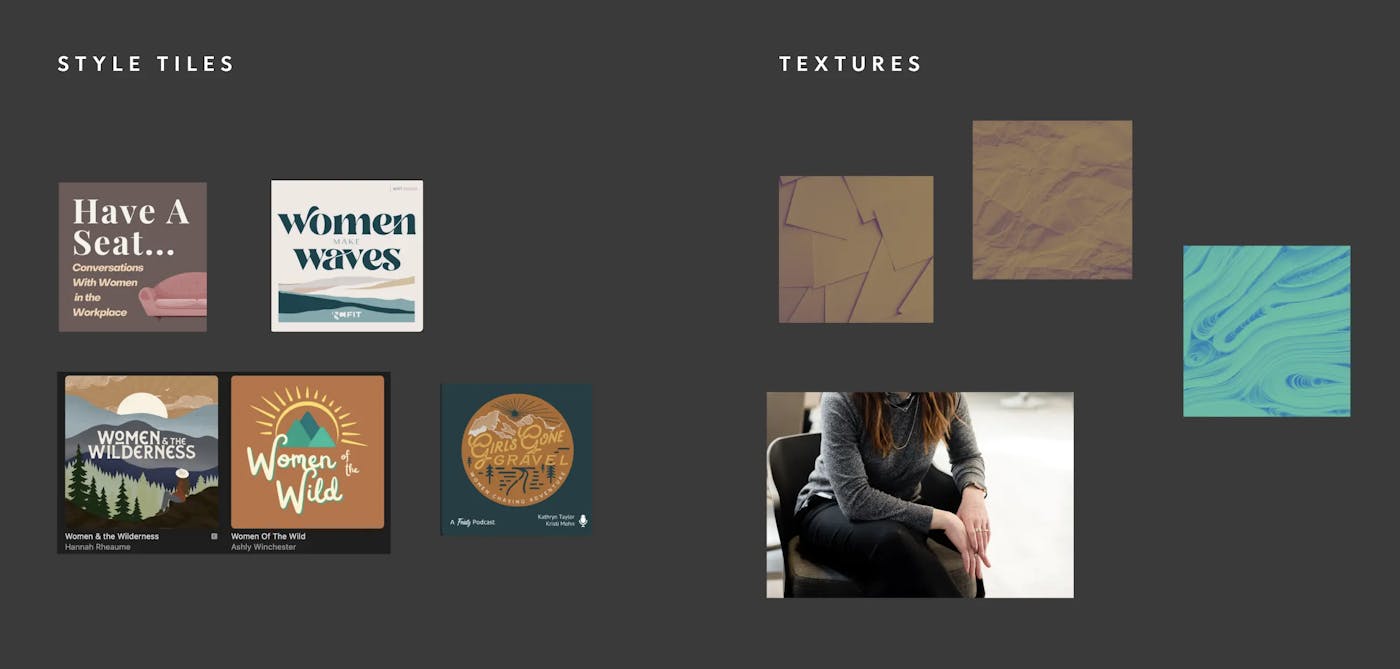
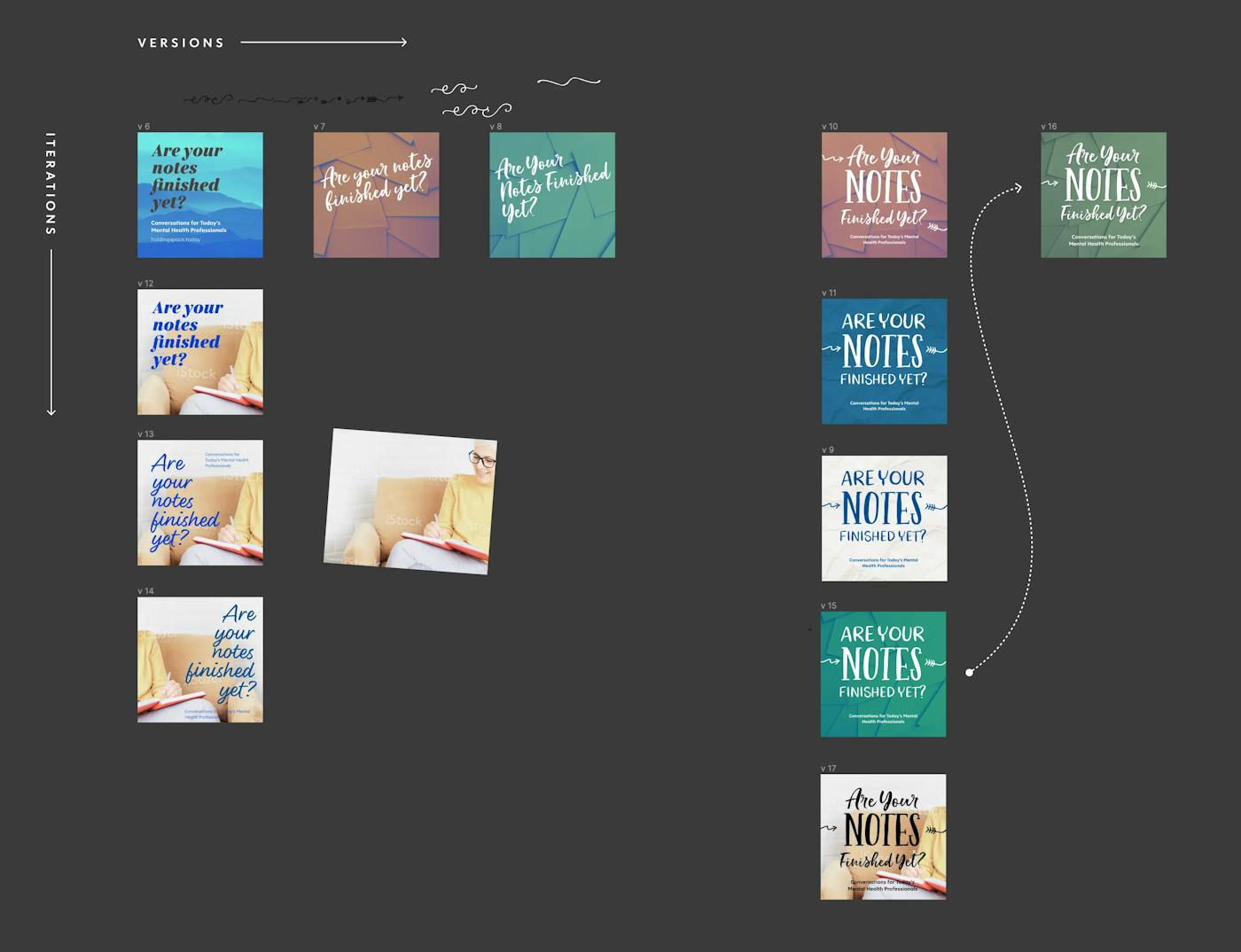
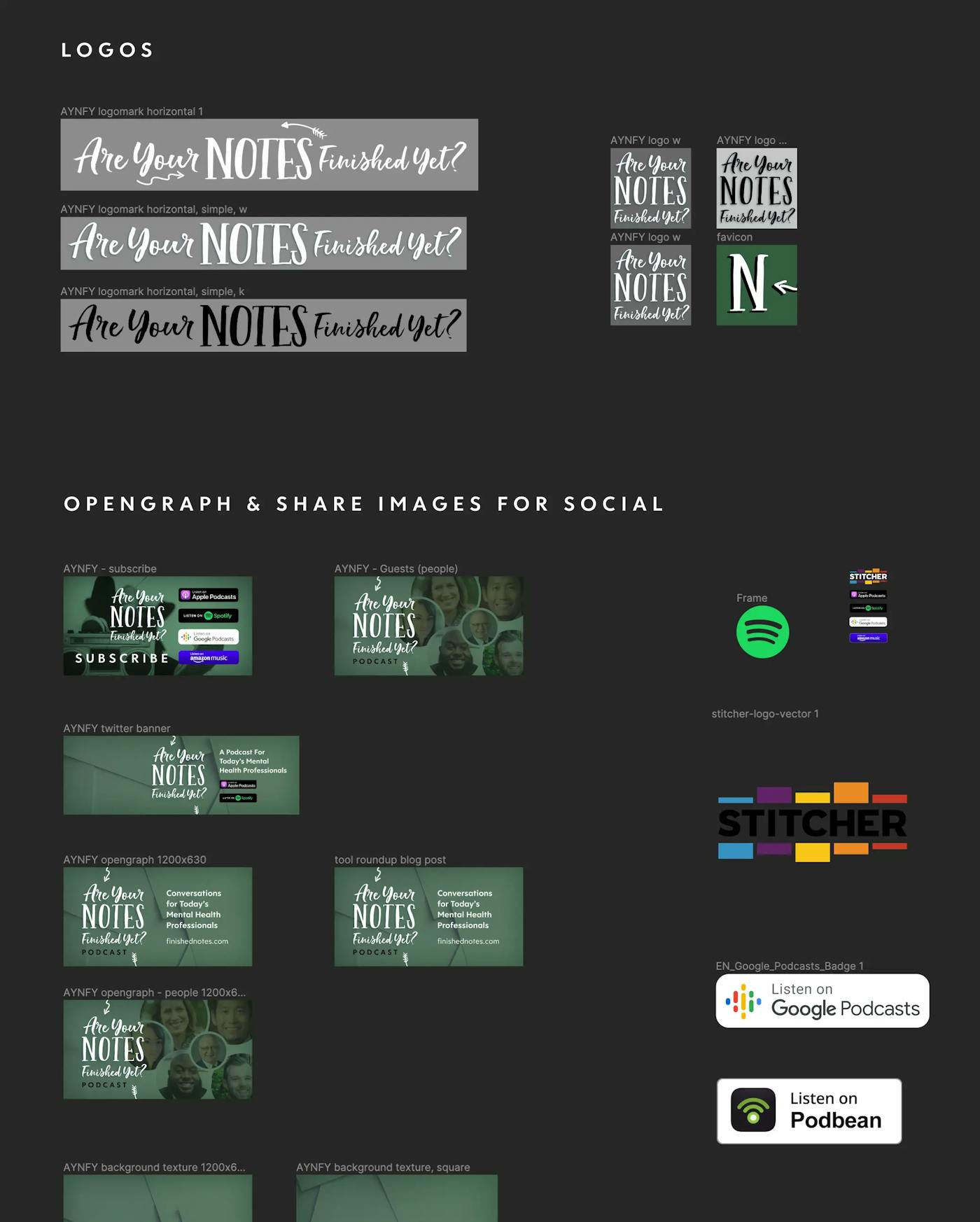

Website: Stackbit
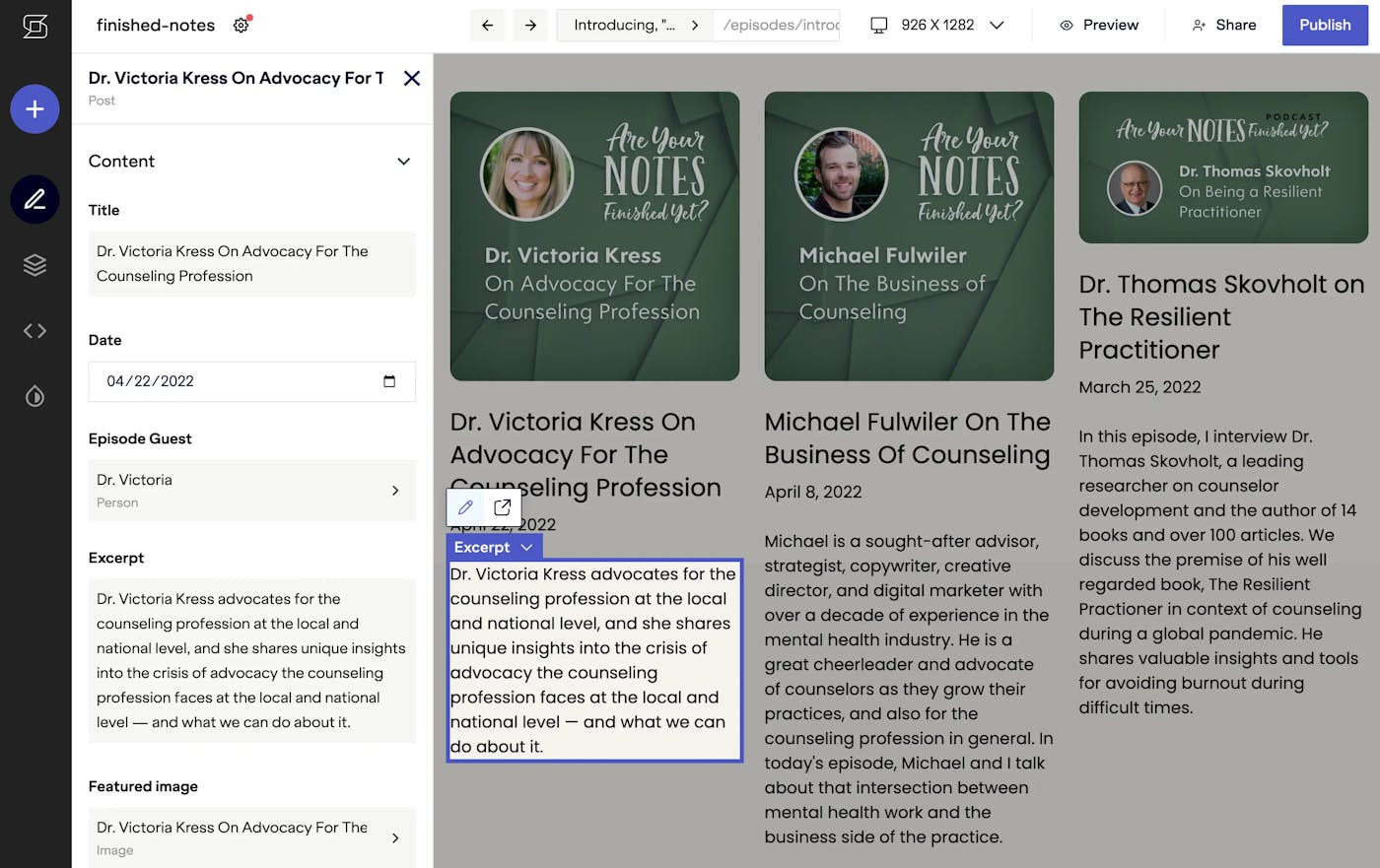
I needed to get going fast and crank these episodes out, with a decent website. Stackbit fit the bill. It let me launch it quick and saved me from having to built it from scratch (which I considered and can do). For this project it was great, and I’ve learned a lot about React and Next along the way. It’s a developer product — but can be used by non-technical folks once it’s set up. I also lucked out on the domain name and social media handles!
Price: free for small stuff
“But Allan! Why didn’t you use Contentful?” While I love and use Contentful, I didn’t for a few reasons.
- This show is a tiny experiment. While I’m capable of building a site from scratch with a static site generator (probably would go with Eleventy for something like this), speed and a decent template was optimal.
- Contentful makes lots of sense beyond a certain threshold. For 10-15 episodes total that’s an extra layer I didn’t need.
- I was in a hurry, and wanted to focus on the parts that mattered the most (audio, branding, syndication).
- I wanted an editorial experience that a non-developer could use quickly and intuitively. Stackbit does that nicely.
- If we do a season two, I’ll do a refit and extend it with Contentful; Stackbit works great with it.
Video Editing: Davinci Resolve 18
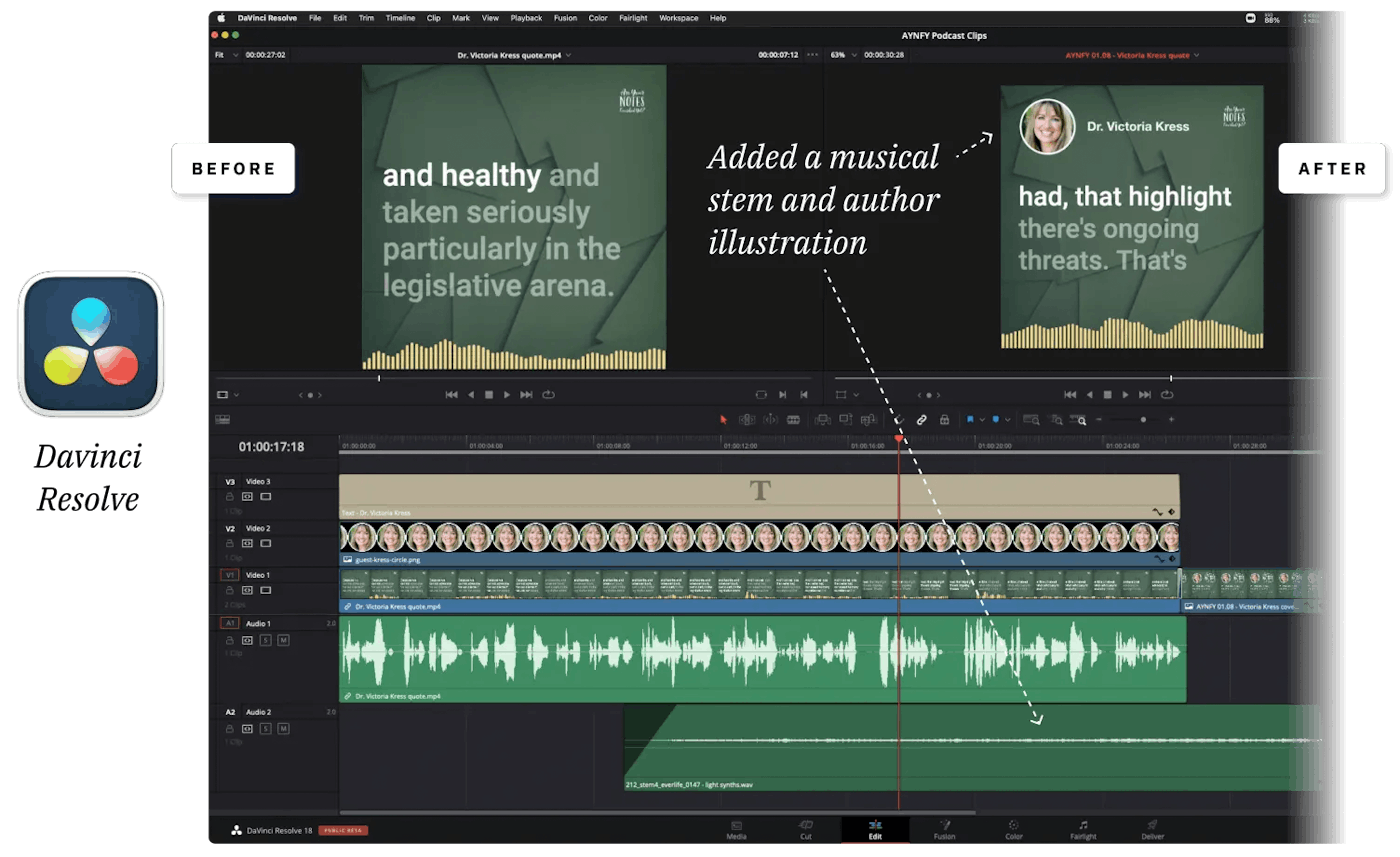
I’ve been experimenting with these “audiograms” Descript can generate from a selection, you can see below. The visualization of the caption and sound is quite nice; the styling options are a bit simplistic. I generated a basic one then threw this into Blackmagic Design’s Davinci Resolve to see if I could add some extra sauce quickly. A bit overkill for a 30-second teaser? Yes. But, over my career I’ve followed a useful pattern: push the envelope, make something crazy and maybe labor-intensive, evaluate the result, then see what can be scaled. That’s how you know what is worth spending time on — or solving with technology.
Price: free (which is insane. Resolve is Hollywood-grade)
In this episode, Dr. Victoria E. Kress exposes the crisis of advocacy the counseling profession faces at the local and national level — and what we can do about it.https://t.co/d12rtwBefI pic.twitter.com/r19lzi72Fx
— "Are Your Notes Finished Yet?" Podcast (@finishednotes) April 23, 2022
Podcast Hosting and Syndication: Buzzsprout
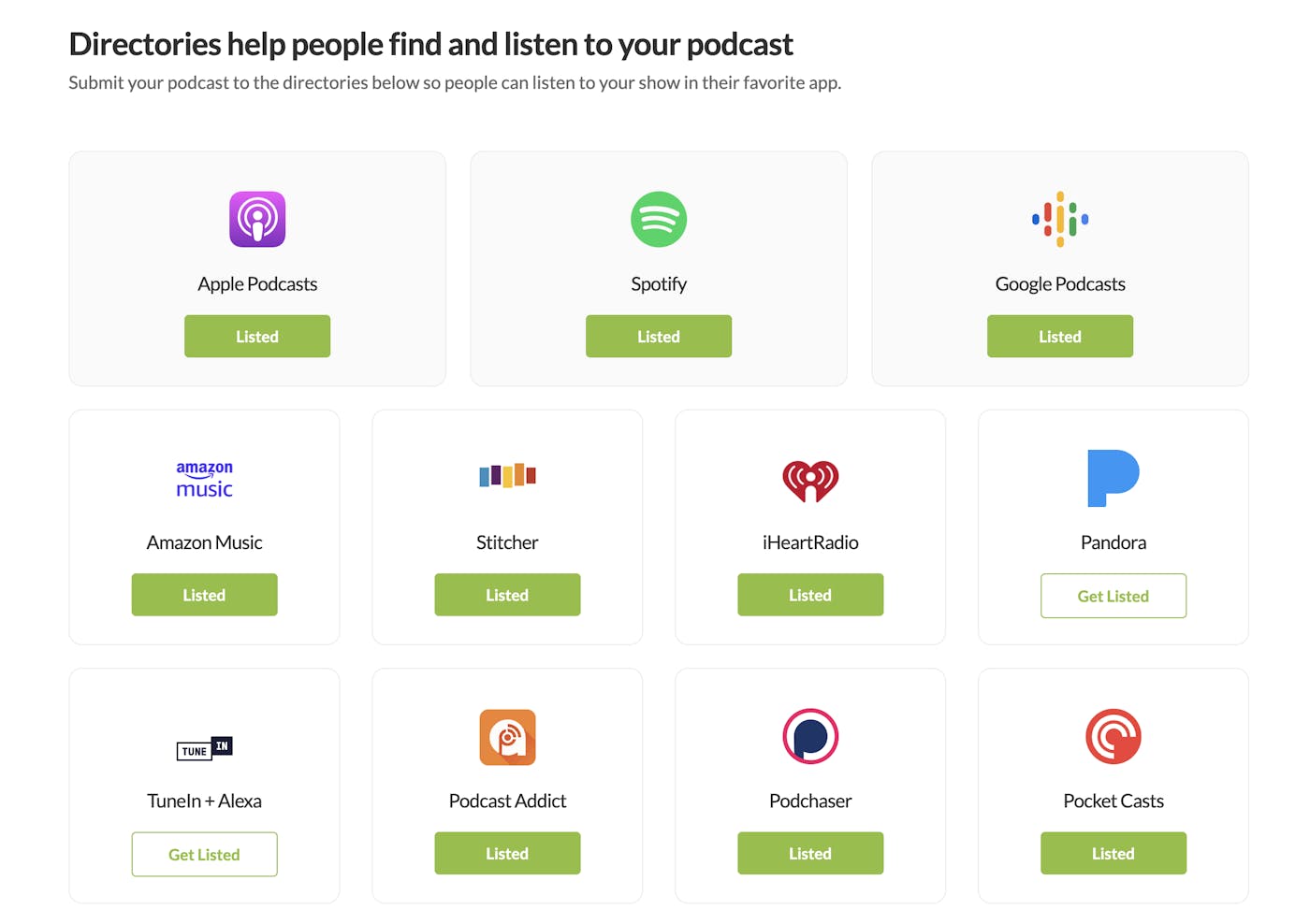
Podcast hosting (where the files live) and syndication (sending to all the player services like Spotify, Apple, and Google) are essential — and complex to manage on your own. My advice: just get a service to do these critical jobs. Buzzsprout was well-reviewed and lives up to the word on the street.
This space has become more crowded over the last decade, and I did a fair bit of research into these platforms. Most of them offer things I don’t need [yet] like audio sweetening, monetization, web hosting, etc. The file hosting, web player widgets, and most importantly, syndication to all the podcast services with all their various oddities just works. I do wish the players were more customizable and themeable, but its good enough.
Price: plans from $12/month
Final costs and the road ahead
That’s a quick tools & services round-up. My initial software spend was around $75 including the domain, with monthy costs about $38 for Descript and Buzzsprout. Once we get into maintenance mode, those costs will drop and I can even go down-tier on Buzzsprout if needed.
What else would you like to know?
What else would you like to hear about? This has been a really enjoyable creative outlet and side project, and I’ve learned so much about Kristi Cash White’s field through these interviews.
